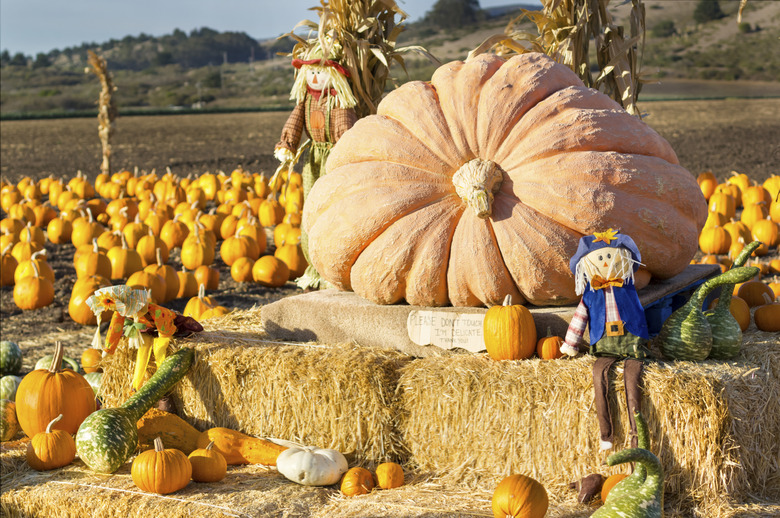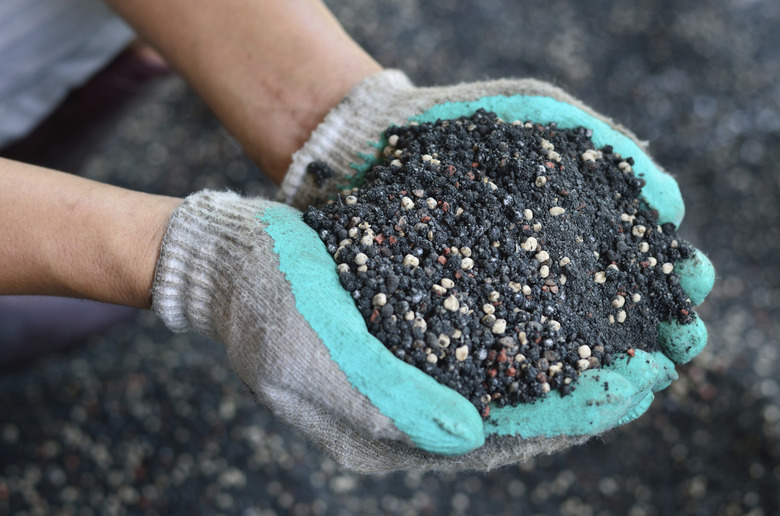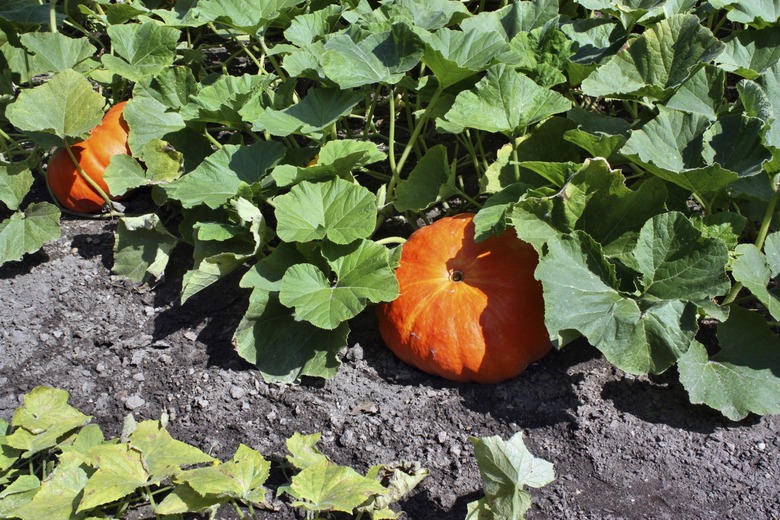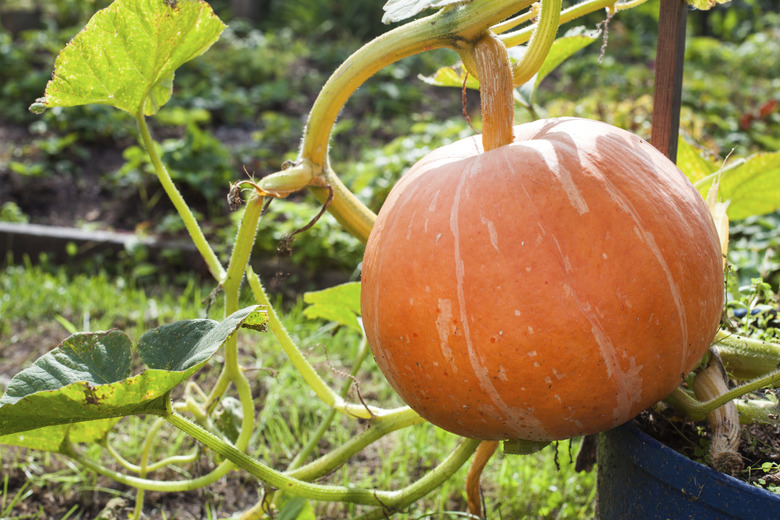The Best Fertilizer For Growing Giant Pumpkins
Giant pumpkins need good seed, good soil, attention and fertilizer. Fertilizer is beneficial, but good, healthy soil and the correct initial positioning for adequate sunlight can also make a difference. Selecting a mainly dry, very sunny spot for the pumpkin patch, caring for the vine and using the appropriate fertilizer will ensure the giant pumpkin's growth. Which fertilizer is best depends on the stage of the pumpkin's growth, and the amount to apply depends on the type of fertilizer and the size of the pumpkin patch.
Basics of Fertilizer
Fertilizer is categorized by its mix of nitrogen, phosphorus and potassium. The fertilizer usually has a ratio, such as 5-15-5, which means it consists of 5 percent nitrogen, 15 percent phosphorus and 5 percent potassium, in that order. Fertilizers will also have other micronutrients, such as iron. Fertilizers come in liquid form or pellets. The liquid form releases quickly into the soil and leaves, whereas the pellet or dry form may take longer to dissolve and release. Some growers prefer to use all-natural fertilizer, such as manure, though natural fertilizers don't come with a label that informs the grower of the chemical balance. Determining which natural fertilizer works best could take time and many pumpkin harvests (though the same could be said for any type of fertilizer).
Application
Even for giant pumpkins, fertilizer should be applied to healthy plants in healthy soil only once every two weeks. The best fertilizer depends on the stage of pumpkin growth. Some sources suggest using more phosphorus, the second number on the fertilizer categorization, on seedlings, and then using a balanced formula once the pumpkin has fruited. Later in the growing season, a fertilizer with more potassium is recommended.
For example, you might apply a 5-10-10 fertilizer to the soil about six to eight inches around pumpkin seedlings. As the pumpkin grows, switch to a 20-20-20, or even manure alone. While the plants are mature and expanding, use a fertilizer with more potassium such as a 10-10-20. A super-potassium fertilizer, a 0-0-60, is available for giant-pumpkin growers. The amount of fertilizer will depend on the size of the garden, not the size of the pumpkin. The amount will also vary based on the type of fertilizer used, with more for phosphates but less for nitrogen-intensive fertilizer. Fertilizer packages will usually have recommendations according to the square-foot size of the garden, or in this case, the pumpkin patch.
Other Considerations
Most experts agree that though fertilizer is good, too much can be bad for the pumpkin. A pumpkin that grows too quickly will detach from its vine, and too much fertilizer applied to leaves can burn them.
Selecting a mainly dry, very sunny spot for the pumpkin patch and caring for the vine are possibly more important than aggressive fertilizing. Giant pumpkins need the appropriate seeds, a growing season of up to 130 days and lots of sunshine, with a dash of fertilizer to help the good soil that already exists in the pumpkin patch. Local pumpkin-growing clubs, especially those for grower of giant pumpkins, can also provide information on fertilizers appropriate for local soils and growing conditions.



